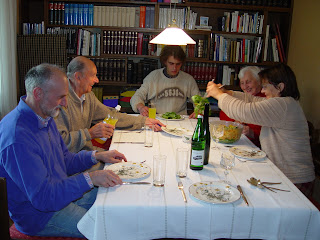Anyway, back to the kitchen. Times were different back then, kitchens were women's domain. It simply was not a place for a boy or none of the male members of the family for that matter. On the other hand, many renowned chefs were mostly male in professional kitchens. Also, there was an obvious glass sealing in professional opportunities for female chefs in this setting. It seems as though things have changed quite a lot since then. Today, cooking has become a national pass-time, as well as an obsession in many families. Gender distinction doesn't seem to occur in home kitchens any more. In fact, many young people-both genders seem to romanticize a life as a chef. Might as well, it does come with lucrative rewards for the ones who succeed.
Home kitchens had long been a territory where maternal linage has took deep root. Often were the teases from my brothers regarding my stint as a kitchen helper. My brothers used to say, "If you keep this up, your family treasure will fall off". Thankfully, those days are long gone. There is now equality in professional kitchens as well in home kitchens.
Well, my rude introduction into the kitchen as a child has set me up for a life-long journey into delicious world of food. The skills I had acquired became handy during my college years when I financed my studies partially with catering income. Out of necessity, I had to specialize in small sit down dinners in people's homes. Thank God for those professors, and wealthy doctors. One thing I had to learn quickly as a traveling cook was finding my way around in strangers' kitchen. I did multi-course meals, giving each course exotic names from far-away places. This humble tradition continued, even when I stopped the catering gigs. With new-found freedom after years of studies, I travelled, I ate, & I cooked.
I travel with kitchen knife. Weird, I know. If I am staying over night somewhere, there will be some kind of food prepared by me. All my friends & family members scattered in three continents were routinely subjected to my culinary assaults, experiments, and delights. I thank them for letting me indulge in my culinary inspirations. Like many people who love to cook, I feel the rush when I watch people come together, sitting around the table, opening up to share my food, their emotions, their happiness. I usually sit there & just watch; their smiles, their chatters, their lip smacking, their compliments. We are a family again, as if no time has passed, & as if no distance ever existed. And I think to myself, "this is what it's all about".
My Gracious friends in Northern Germany. Beautiful land, Beautiful food, Beautiful people.

















